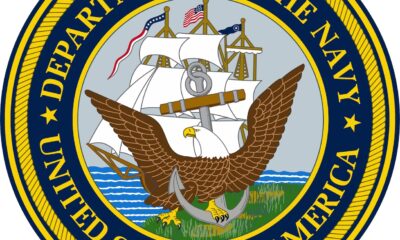All Navy Categories
The Heritage Hour: FORRESTAL Blaze Ignites at NNSY
PORTSMOUTH, Va. — October marks a significant chapter in USS Forrestal (CVA-59) history, recognizing the ship’s 1955 commissioning and the critical lessons learned from a 1967 tragedy. This incident reshaped the U.S. Navy’s fire safety protocols. Norfolk Naval Shipyard (NNSY) played a pivotal role in the ship’s recovery, advancing safety measures that continue to influence naval practices today. In alignment with National Fire Prevention Week, we delve into the past, recounting the relentless efforts to overcome the disaster on the USS Forrestal and the enduring changes implemented as a result.
In July 1967, while positioned in the South China Sea, the USS Forrestal faced a dire situation. The ship received a shipment including 16 AN-M65A1 bombs, which were compromised due to a leaking paraffin agent. This delivery came with a warning from handlers who advised their immediate disposal off the ship. However, the mission’s urgency necessitated their storage on deck, avoiding potentially catastrophic magazine storage. An electrical surge on July 29 triggered an unguided rocket from an F-4B Phantom II, inadvertently igniting the JP-5 fuel of an A-4E Skyhawk. Damage Control Team No. 8 responded swiftly, but the deteriorating condition of the bomb reduced their window for containment, leading to a devastating detonation. The inferno claimed 134 lives and injured 161.
The severely damaged USS Forrestal arrived at NNSY for crucial repair efforts on Sept. 19. The repair process initiated with the removal of the starboard elevator, utilizing the Hammerhead Crane, before transitioning to Dry Dock 8. Incorporating 12 railcars of superior HY-100 steel, 300 skilled welders applied innovative techniques to reinforce the vessel’s structure. By November, significant progress was made, leading to sea trials in April 1968. After extensive six-and-a-half-month repairs, the USS Forrestal rejoined the fleet.
The tragic event left an indelible mark on naval safety protocols. The Farrier Firefighting School in Norfolk honors Chief Gerald W. Farrier, who bravely led his team during the catastrophe, prioritizing crew safety over his own. The Navy implemented mandatory firefighting training for all personnel and overhauled the flight deck fire suppression systems, aiming to avert future disasters. The legacy of USS Forrestal and her crew serves as a reminder of the importance of vigilance and preparedness in naval operations.









